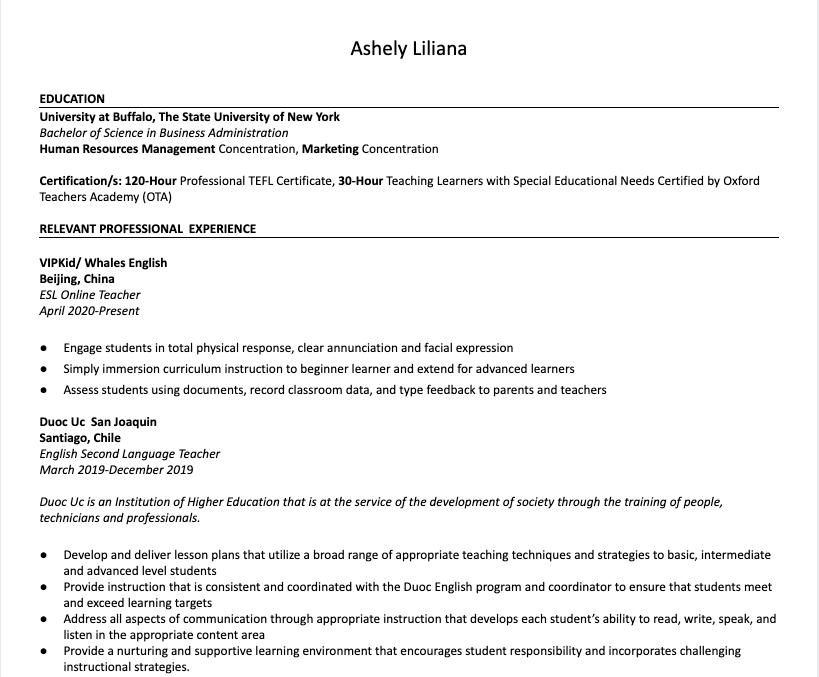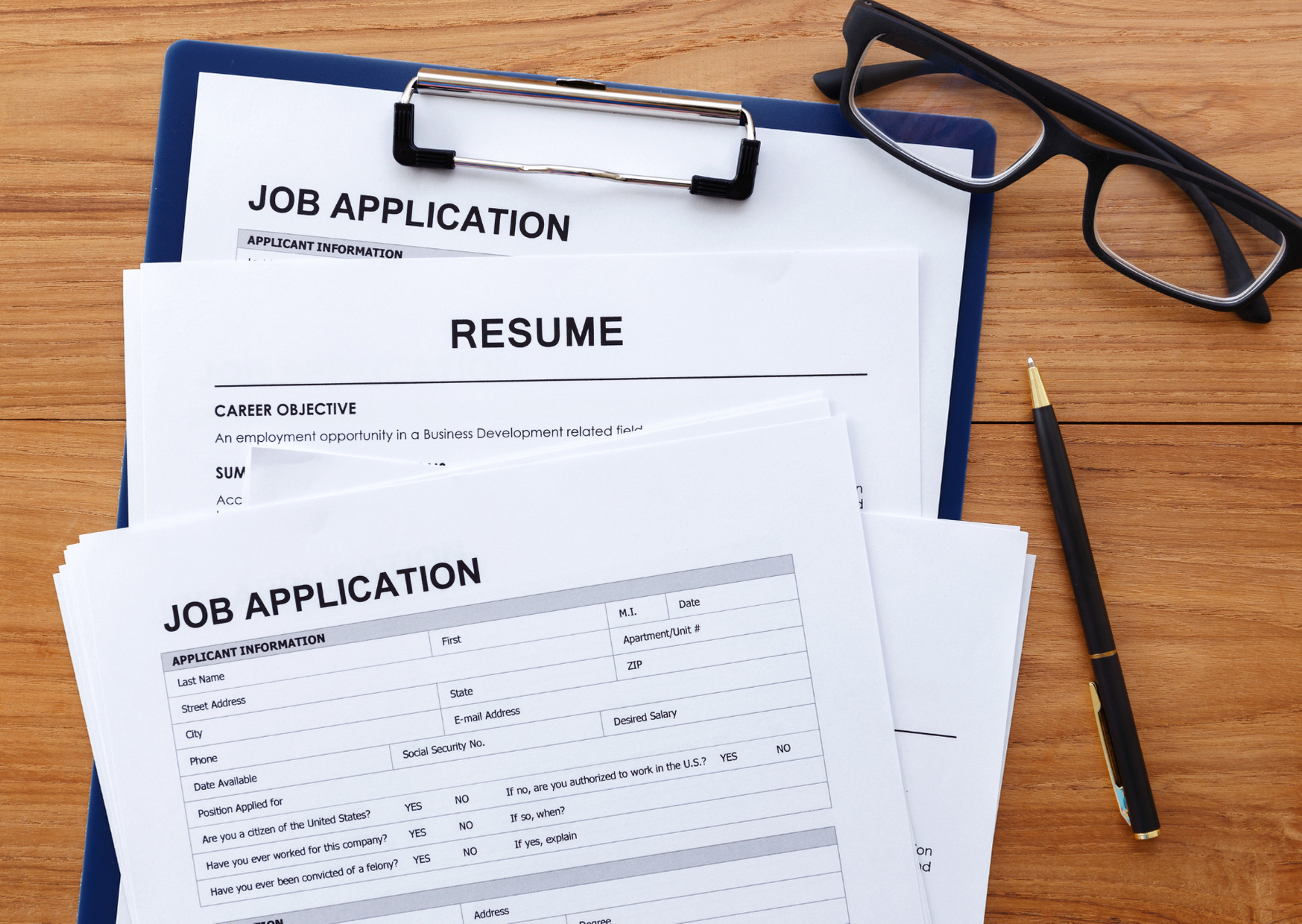How To Write A Resume & CV For ESL Teaching Jobs
Whether you are applying directly to a job or through a program, you will most likely be required to submit a resume or a cv for an ESL job.
I will break down some dos, don’t and share TIPS to guide you if you are stuck or don’t know where to start with your resume/cv for that ESL job abroad.
Why should you keep reading? I worked in H.R. with a heavy emphasis on recruitment before quitting my job to move to Chile to teach. Not to mention the countless resumes from my friends and family members’ I have read and edited. I hope this serves as a guide for you.
CV vs Resume
Let’s start with a cv and resume because, yes, there is a difference.
In North America, mainly in the U.S., it is very common to hear the term resume. A resume is shorter, usually a page long, and highlights relevant experience and education.
In the rest of the world, a cv, aka curriculum vitae, is more common. This is a longer format and includes all your educational, work, or publishing history. You might be asked to include your gender, marital status, and a photo of yourself in certain countries.
One is not better than the other but make sure to read what the position requires and not to offer up all the personal info unless the position requires it.
My personal preference is to stick with a resume (1-2 pages) highlighting my relevant experience.
The Do’s and The Don’ts
This section will break down different parts of the resume/cv and what you should and shouldn’t include.
Format
Different countries have different cv/ resume styles. Do some research on how they look in other countries, and make sure to update your resume. There was once a way of doing a resume; see below, that is outdated. So do not be afraid to change it up. With that, make sure you remember your audience. Don’t send a resume for a social media position to an ESL position.

TIP: I recommend using Canva. There is a free and paid version. Search educational, teacher, or professional resume and pick a template that speaks to you.
Contact Info
This is pretty self-explanatory. Include your email and your Skype name. You can include your cellphone, but unless the hiring is happening in the U.S or the program is U.S based, a phone number isn’t always helpful.
Education and Certifications
Do Include:
- Degree: The degree you have, bachelors, masters, etc. Most will require you to have a bachelor’s in any field, so they will look to see if you have that requirement.
- TEFL/TESOL: All most all, require a TEFL, and even if they don’t, it’s an excellent certification to include. Make sure to specify the hours. i.e., 120-HR TEFL.
- Any certifications related to teaching if you have.
Don’t include your CPR certification or others of that like. You can leave it out.
Experience
Do include relevant experience. Here are some examples:
- If you have had a babysitting job, tutor, worked at a summer camp, mentored, these are all examples of relevant experiences to include.
- If you have direct experience, definitely include that. Examples of this would be teaching, teaching ESL in another country, a volunteer ESL teacher.
What if I do not have any of the above?
Do not worry.
Let’s say you have a corporate job or worked as an assistant manager at a restaurant; you have the skills needed to be an ESL teacher.
Have you trained new employees on systems, procedures, memorizing a menu? or Managed a department or a shift?
These are all transferable skills! If you managed a shift or team, then you most likely have classroom management skills. If you had to train a new employee, you had to teach new skills or a new of doing something.
Your resume is all about teachifying your experience! Your goal is to look at your experience and skills and make the connection for the person who is reading your resume by using keywords and phrases.
TIP: Google ESL CV/Resumes. Look at the action words they use for their bullet points. What words apply to you, and how can you use them in your resume.
Skills
Do include this section but only with skills that are relevant and skills you have. Remember, there are hard skills and soft skills. Hard skills are technical things you know how to do, like editing or using teaching technologies. Soft skills are classroom management, organizational skills.
Including you are a native English speaker is never a bad idea, in my opinion.
Don’t include other irrelevant skills.
Some countries might require a basic or intermediate understanding of the language; in this case, it is a good idea to mention if you speak that language. Otherwise, there is no need to write you are fluent in French if you want to teach in Chile.
TIP: My favorite trick is to go to the requirement section of the job description and read the duties and responsibilities. If the position does not have a job description, Google: ESL Teacher Job Description and use them as guidance.
Hobbies or Interest
Do not include hobbies or interests in your resume for the ESL job unless specified by the employer. Sometimes we are taught in school to have this as a filler. I recommend not to include it.
TIP: Think about your audience. They are looking for specific skills and potential. For example, would you include Final Cut Pro editing skills for an ESL job? Probably not, unless the job required it.
Key TIPS for Writing an ESL Resume/CV
- Know your audience. This will help with everything from your format and design to the experience you include.
- Review the responsibilities and requirements. This will guide you to what include in the skills and the bullet points in your experience. Remember, you have to make the connection for the person reading your resume.
- Include relevant experience; everything else leave out of your resume/cv.
- Research other ESL resumes/CVs. Whether it is country-specific or not, it will help you see what words, bullets point to include.
- Don’t lie; only write what you can speak to.
Now you are ready to write your resume and be one step closer to that ESL job abroad.
Suerte!



